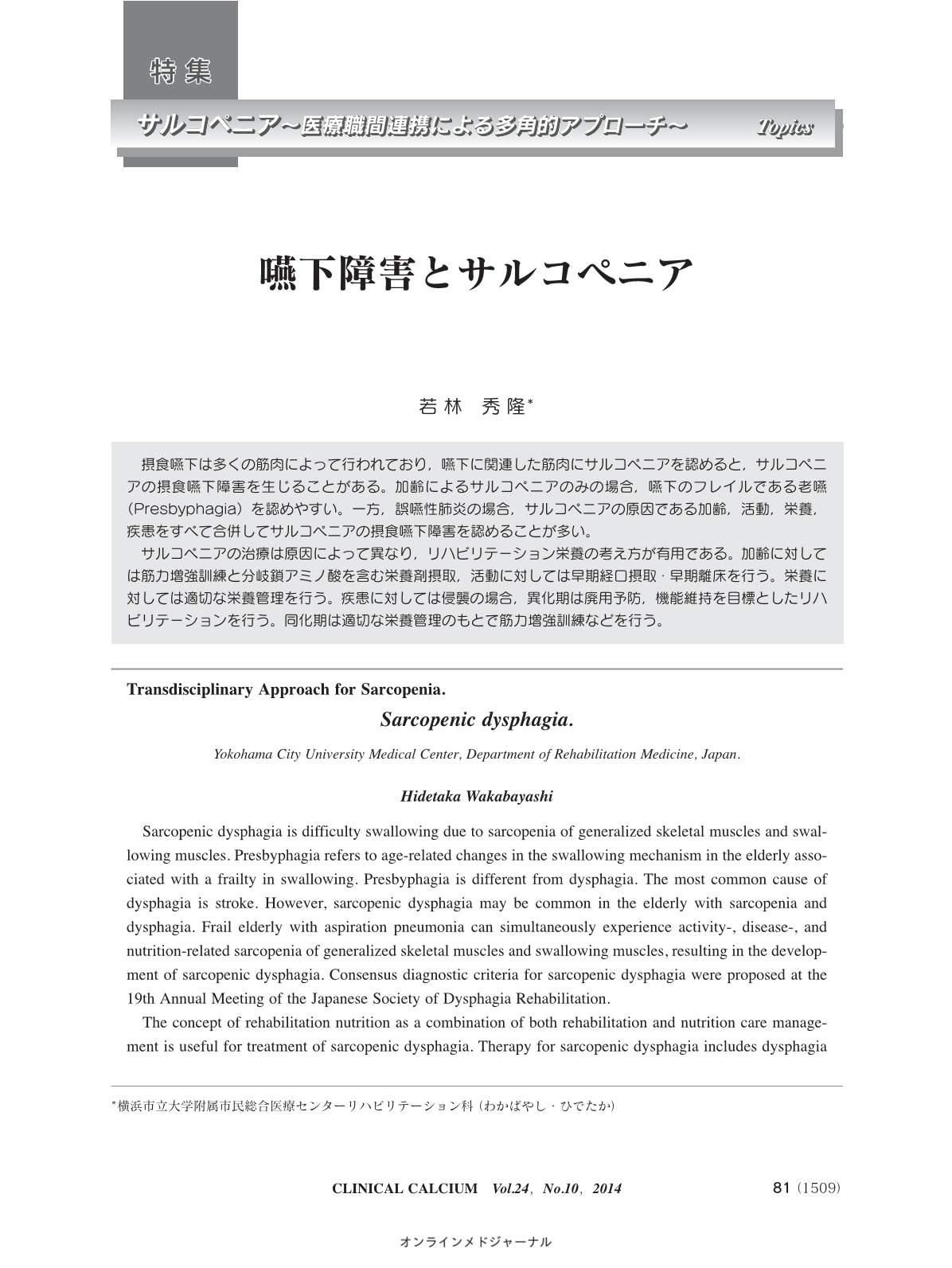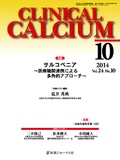Japanese
English
- 有料閲覧
- Abstract 文献概要
- 1ページ目 Look Inside
- 参考文献 Reference
摂食嚥下は多くの筋肉によって行われており,嚥下に関連した筋肉にサルコペニアを認めると,サルコペニアの摂食嚥下障害を生じることがある。加齢によるサルコペニアのみの場合,嚥下のフレイルである老嚥(Presbyphagia)を認めやすい。一方,誤嚥性肺炎の場合,サルコペニアの原因である加齢,活動,栄養,疾患をすべて合併してサルコペニアの摂食嚥下障害を認めることが多い。 サルコペニアの治療は原因によって異なり,リハビリテーション栄養の考え方が有用である。加齢に対しては筋力増強訓練と分岐鎖アミノ酸を含む栄養剤摂取,活動に対しては早期経口摂取・早期離床を行う。栄養に対しては適切な栄養管理を行う。疾患に対しては侵襲の場合,異化期は廃用予防,機能維持を目標としたリハビリテーションを行う。同化期は適切な栄養管理のもとで筋力増強訓練などを行う。
Sarcopenic dysphagia is difficulty swallowing due to sarcopenia of generalized skeletal muscles and swallowing muscles. Presbyphagia refers to age-related changes in the swallowing mechanism in the elderly associated with a frailty in swallowing. Presbyphagia is different from dysphagia. The most common cause of dysphagia is stroke. However, sarcopenic dysphagia may be common in the elderly with sarcopenia and dysphagia. Frail elderly with aspiration pneumonia can simultaneously experience activity-, disease-, and nutrition-related sarcopenia of generalized skeletal muscles and swallowing muscles, resulting in the development of sarcopenic dysphagia. Consensus diagnostic criteria for sarcopenic dysphagia were proposed at the 19th Annual Meeting of the Japanese Society of Dysphagia Rehabilitation. The concept of rehabilitation nutrition as a combination of both rehabilitation and nutrition care management is useful for treatment of sarcopenic dysphagia. Therapy for sarcopenic dysphagia includes dysphagia rehabilitation, nutrition improvement and sarcopenia treatment. The core components of dysphagia rehabilitation are oral health care, rehabilitative techniques, and food modification. Nutrition improvement is important, because malnutrition contributes to the etiology of secondary sarcopenia and sarcopenic dysphagia. Assessment of the multi-factorial causes of primary and secondary sarcopenia is important because rehabilitation nutrition for sarcopenia differs depending on its etiology. Treatment of age-related sarcopenia should include resistance training and dietary supplements of amino acids. Therapy for activity-related sarcopenia includes reduced bed rest time and early mobilization and physical activity. Treatment for disease-related sarcopenia requires therapies for advanced organ failure, inflammatory disease, or malignancy, while therapy for nutrition-related sarcopenia involves appropriate nutrition management to increase muscle mass.



